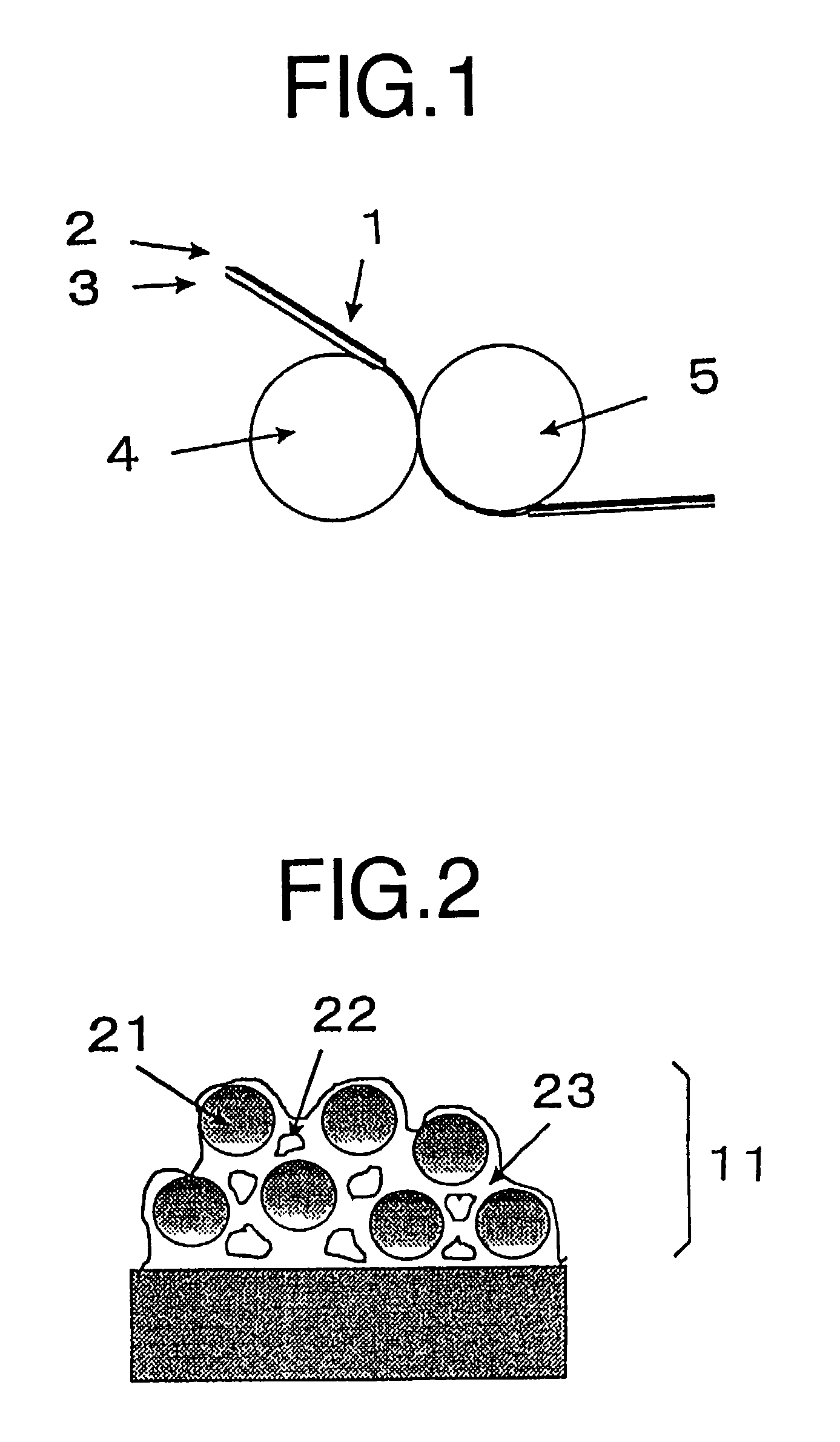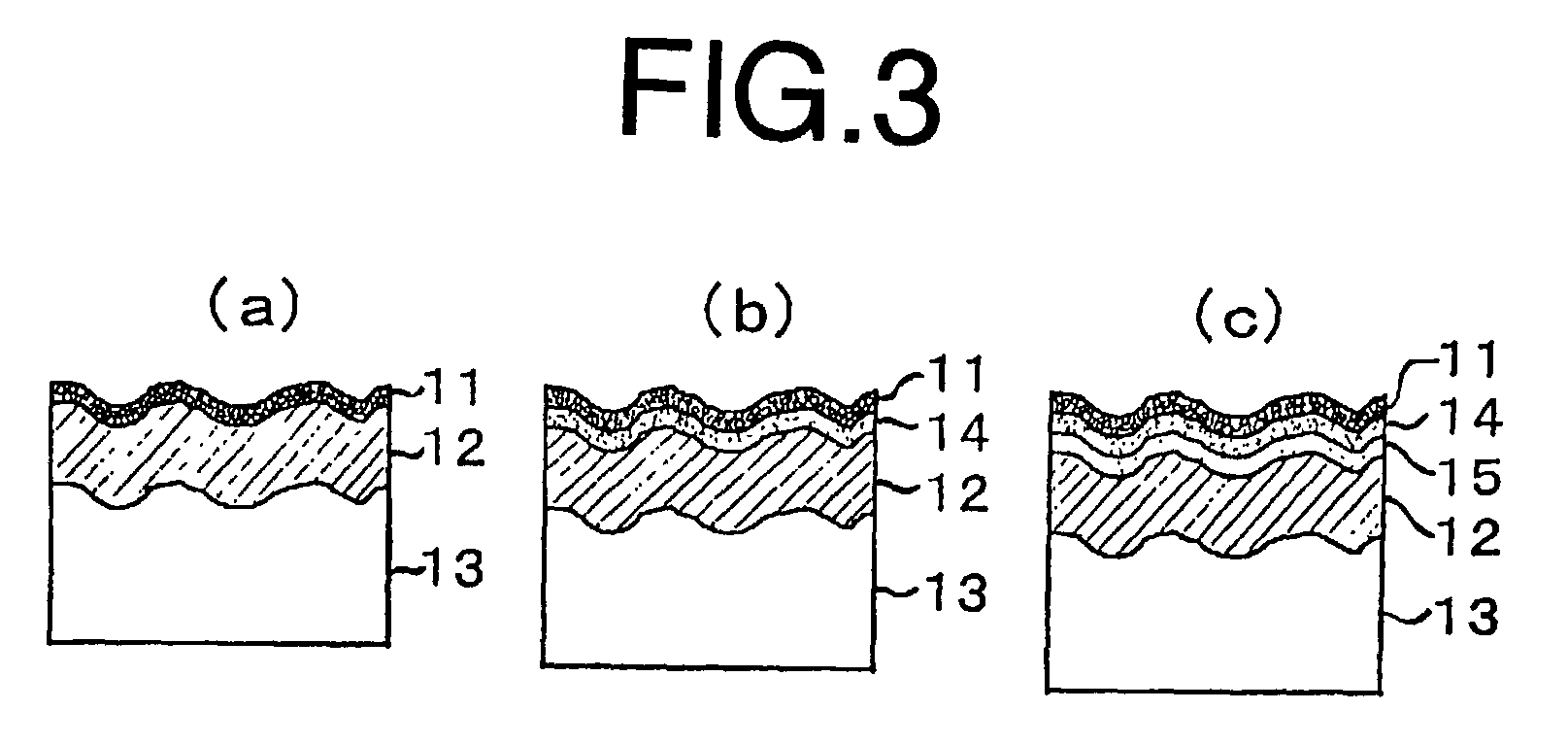Anti-reflection film and process for the preparation of the same
a technology of anti-reflection film and anti-glare, which is applied in the field of anti-reflection film and a process for the same preparation, can solve the problems of low refractive index layer containing the voids that cannot satisfy the refractive index of the layer, hard but very fragile, and insufficient mechanical strength of the low refractive index layer, etc., to achieve excellent anti-reflection and anti-glare performance, easy formation, and easy production
- Summary
- Abstract
- Description
- Claims
- Application Information
AI Technical Summary
Benefits of technology
Problems solved by technology
Method used
Image
Examples
example 1
(Formation of Hard Coating Layer)
[0119]250 g of a mixture of dipentaerythritol pentaacrylate and dipentaerythritol hexaacrylate (DPHA, Nippon Kayaku Co., Ltd.) was dissolved in 439 g of industrial denatured ethanol. To the obtained solution, a solution prepared by dissolving 7.5 g of a photopolymerization initiator (Irgacure 907, Ciba-Geigy) and 5.0 g of a photosensitizer (Kayacure DETX, Nippon Kayaku Co., Ltd.) in 49 g of methyl ethyl ketone was added. After stirring, the mixture was filtered through 1 μm mesh to prepare a coating liquid for hard coating layer.
[0120]On a triacetylcellulose film (TAC-TD80U, Fuji Photo Film Co., Ltd.) having 80 μm thickness, a gelatin under-coating layer was provided. The coating liquid for hard coating layer was applied on the undercoating layer with a bar coater, dried at 120° C., and irradiated with UV light to harden. Thus, a hard coating layer having 6 μm thickness was formed.
(Preparation of Coating Liquid for Low Refractive Index Layer)
[0121]20...
example 2
Preparation of Titanium Dioxide Dispersion)
[0127]30 weight parts of titanium dioxide (weight mean particle size of primary particles: 50 nm, refractive index: 2.70), 3 weight parts of the following anionic monomer (1), 3 weight parts of the following anionic monomer (2), 1 weight part of the following cationic monomer and 63 weight parts of methyl ethyl ketone were mixed by means of a sand grinder to prepare a dispersion of titanium dioxide.
Anionic monomer (1)
[0128]
Anionic monomer (2)
[0129]
Cationic monomer
[0130]
(Preparation of Coating Liquid for Middle Refractive Index Layer)
[0131]0.18 g of a photopolymerization initiator (Irgacure 907, Ciba-Geigy) and 0.059 g of a photosensitizer (Kayacure DETX, Nippon Kayaku Co., Ltd.) were dissolved in 172 g of cyclohexanone and 43 g of methyl ethyl ketone. To the obtained solution, a mixture of 15.8 g of the titanium dioxide dispersion and 3.1 g of a mixture of dipentaerythritol pentaacrylate and dipentaerythritol hexaacrylate (DPHA, Nippon Kaya...
example 3
[0139]The procedure of Example 1 was repeated except that a coating liquid prepared by diluting 100 g of thermo-crosslinkable polymer containing fluorine (Opstar JN-7214, Nippon Goseo Gomu Co., Ltd.) with 18 g of methyl ethyl ketone was used, to produce an anti-reflection film.
[0140]The average reflectance (in the wavelength region of 450 to 650 nm), the haze, and the surface mechanical strength (in terms of pencil grades) of the prepared film were measured, and found 1.0%, 1.5%, and H, respectively.
[0141]Further, the surface roughness (Ra) and the ratio of the roughness strength having a pitch of 1 to 10 μm were measured by means of a scanning probe microscope, and found 0.10 μm and 23%, respectively.
PUM
| Property | Measurement | Unit |
|---|---|---|
| surface roughness | aaaaa | aaaaa |
| surface roughness | aaaaa | aaaaa |
| thickness | aaaaa | aaaaa |
Abstract
Description
Claims
Application Information
 Login to View More
Login to View More - R&D
- Intellectual Property
- Life Sciences
- Materials
- Tech Scout
- Unparalleled Data Quality
- Higher Quality Content
- 60% Fewer Hallucinations
Browse by: Latest US Patents, China's latest patents, Technical Efficacy Thesaurus, Application Domain, Technology Topic, Popular Technical Reports.
© 2025 PatSnap. All rights reserved.Legal|Privacy policy|Modern Slavery Act Transparency Statement|Sitemap|About US| Contact US: help@patsnap.com



